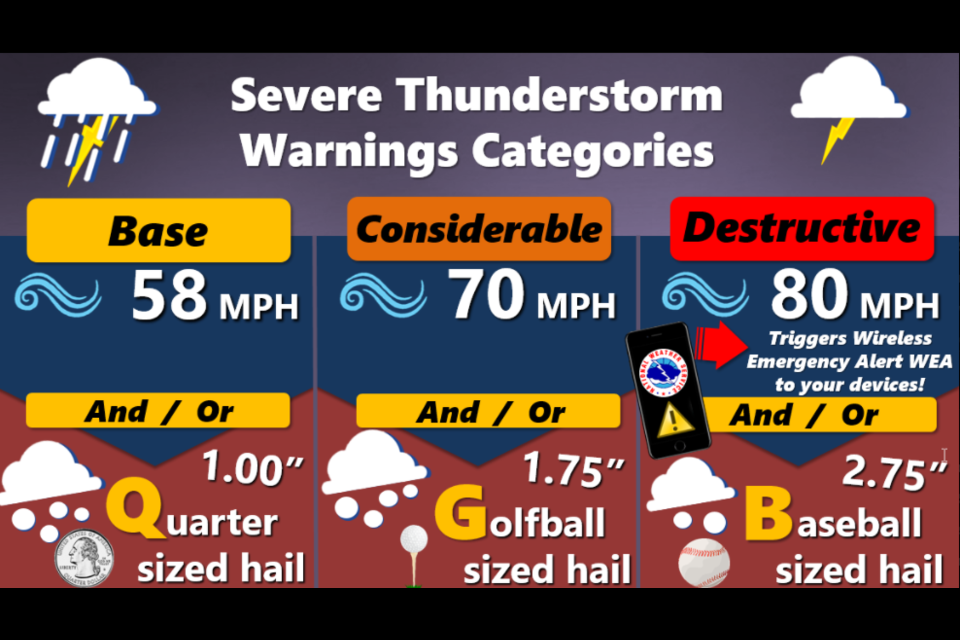The National Weather Service, or NWS, has introduced a new wireless warning system for severe thunderstorms. The Wireless Emergency Alert, or WEA, system will push an emergency notification through to local cell phone users, similar to systems that already exist for Amber alerts and other disaster notifications.
New levels of hazardous conditions for thunderstorms have been introduced as part of the new warning system, adding more details to describe immediate hazards that accompany the storms.
“What we’re trying to do is add some context for the warnings. Prior to this change, the severe thunderstorm warning went out when we were expecting 58 mph winds or 1-inch hail or greater,” said Gregory Hanson, warning coordination meteorologist for the Denver/Boulder NWS. “But we can get some big hail in this area that can really cause some damage. This is a way to get more attention for those higher-level storms.”
The baseline for a severe thunderstorm, 1-inch diameter hail and winds at 58 mph, will remain unchanged. As the threat for larger hail and increased wind develops, so too will the context of the warnings. The intermediate damage warning is being labeled “considerable.” Storms will need to produce 1.75-inch diameter hail and winds at 70 mph to reach this level.
The baseline and “considerable” warnings will not trigger the new WEA mobile alerts, though storm warnings will continue to be issued through usual broadcast methods.
The new “destructive” thunderstorm warning’s criteria include 2.75-inch diameter, roughly baseball-sized, and 80 mph winds. The “destructive” storm warnings will automatically activate the WEA system on all smartphones in the affected area, so residents can take immediate action for their own safety.
According to Hanson, the new WEA system wasn’t an option until recently and the NWS is mindful about over-use of the system. The WEA system will only be used when the destructive potential of a storm reaches extreme levels, he said.
“We don’t want people’s phones going off for every severe thunderstorm,” Hanson said. “When we start getting into those higher amounts and wind-driven hail, that can be pretty destructive and it needs a more widespread attention getter.”
According to the NWS, only 10% of severe thunderstorms reach the destructive category each year. The new warning system will get the information out to residents who might not have had response time before. The NWS and National Oceanic and Atmospheric Administration, or NOAA, will continue to broadcast storm warnings and emergency notifications through their specialized weather radio and broadcast through the emergency alert system on television and commercial radio, as well as through weather.gov.
Alerts are automatically sent to all WEA-capable devices so no sign up is necessary. Wireless devices available since 2012 already have a built in feature to receive and present a WEA.
“These WEA notifications will be rare,” Hanson said. “When your phone goes off for a severe thunderstorm warning, that means something and you’ll need to take some action.”



